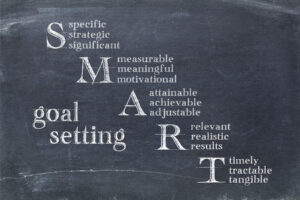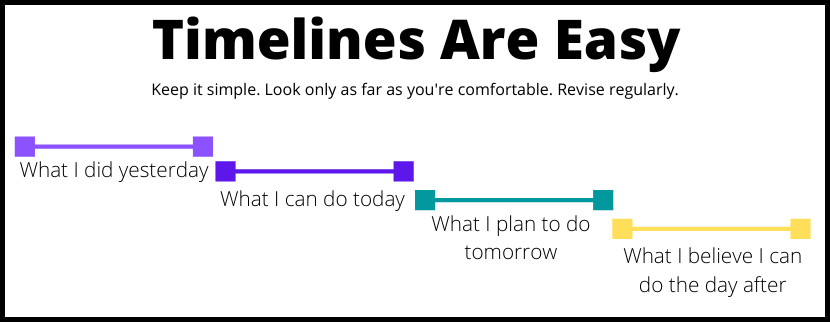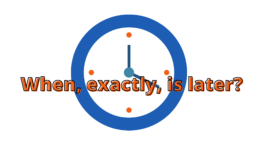The Value of a Planner
How good is your memory? Is short term memory a problem for you? Or is long term memory more difficult? Or are they equal? My memory is all over the place. I went to the market to buy juice and bought everything I hadn’t needed, but no juice. That’s what makes a list important. It’s planning ahead.
To know when your appointments are, or things you want or have promised to do, it makes sense to write them down. And you must write them all in the same place. Thus, a planner. Or a calendar of sorts will do. That way you have one place to turn to every day to see what you’ve got going that day, or to look ahead at the week, or even the month.
There are so many planners out there I could spend hours telling you about them and still not get through them all. There are entire planner systems designed for making and achieving goals. Someone has created a planner for just about every aspect of life. Paper or electronic, you could plan yourself to your last breath. Or you could keep a simple calendar and look at it regularly.
 My dentist always asks me about scheduling an appointment six months out from my current appointment. E.g. “Are you free September 4th?” How would I know that? Fortunately, I have a calendar in my phone and can scroll to September, check the date, and enter the dentist appointment. Now I won’t schedule anything else for that time. I may even set a reminder to make sure I leave the house on time.
My dentist always asks me about scheduling an appointment six months out from my current appointment. E.g. “Are you free September 4th?” How would I know that? Fortunately, I have a calendar in my phone and can scroll to September, check the date, and enter the dentist appointment. Now I won’t schedule anything else for that time. I may even set a reminder to make sure I leave the house on time.
I have a friend I have dinner with every Saturday. If I call her earlier in the week to make a plan (in case we need a reservation), she never has an answer. Only on Saturday afternoon can she come up with an idea. She does not have a planner.
To take charge of your life you need to plan how your life will unfold rather than just letting it happen.
Life is never as easy as we plan it to be; however, having a planner makes the bumps of real life easier to deal with.
- Sydney Metrick
Are you a divergent or convergent thinker?
…or maybe a little of each? Divergent thinkers are primarily intuitive. A word will unleash a wide variety of remote and original associations. Most creative people and people with Attention Deficit Disorder are divergent thinkers.
Convergent thinking is analytical and linear. STEP is a useful way to think about how convergent thinker’s function. S-strategies, T-time, E-energy, P-perseverance. Instead of being blocked by a new project or assignment, a convergent thinker will come up with a strategy. They will imagine how much time will be needed for the whole and for each part. By doing so they’ll know how much energy is required, and commit to persevering.
Divergent thinkers often find convergent thinking challenging. On the other hand, convergent thinkers tend to find divergent thinkers a bit insane.
Alas, at some point we all need to have some convergent thoughts. By thinking of the STEPs and applying them, we can take on a new task or project without a big confrontation going on in our heads.
- Sydney Metrick
Can You Freeze Time?
Have you ever started to leave the house and remember something you want to do first? It doesn’t matter that you are leaving the house so that you will be on time for your appointment, you just have to get this one thing (or two, or three) done.
For some reason, your brain lets you believe that this 5-minute task will not make you 5 minutes late because time will stop for you. And when the 5 minutes turn into 10, no big deal, time isn’t really passing, right? So, it is really surprising that you end up being late to your appointment.
I am sorry to report that real life has not caught up with science fiction and/or fantasy, time just keeps on ticking away. I have to tell you that “no time at all” is a lie your brain is telling you.
 How do you keep track of reality?
How do you keep track of reality?
It helps to have lots of clocks. Have a clock in every room. Analog clocks are more effective as you can see time passing. Look at the clocks frequently. Additionally, for those tasks you only seem to remember at the last minute, write a note. Keep a sticky pad and pen by the door so that you can place the note where you’re sure to see it when you return. Or send yourself a text or voice mail – you can even do that in transit.
Time cushions also help, especially if you include them in your calendar. Cushions give you room for the time an appointment takes that’s not actually appointment time – like travel. I’ve known many people who leave the house when the appointment starts. So, if you need to be somewhere at, say 2 p.m. and travel time in 20 minutes, then the appointment starts (when you leave) at 1:40. I even know a couple of people who have to include the time to get ready (say, getting dressed) in their appointment schedule, otherwise, they wouldn’t get out of bed until the time of their first appointment!
- Sydney Metrick
When Later Never Arrives
Does this ever happen to you? Maybe you drop a sock out of your basket of clean laundry as you’re taking the basket to the bedroom and you think, “I’ll get that later.” Or perhaps you put a dish in the sink and tell yourself you’ll wash it later. It could be you apply later to paying a bill, returning a phone call, or filing papers.
The question in many of these examples is, what would make it easier later? (Other than not having your hands full with the laundry basket.)
I used to teach a class called “Getting Organized for Non-Linear Thinkers.” Some of you may have taken the class. To exemplify the “later” problem, I’d drop a pen and say, “I’ll pick that up later.” As it would take almost no time to bend over and pick it up right then, and I certainly had no plans to be sitting on the floor closer to the pen in the future, the question becomes: When would later actually be?
 The problem with “later” is that it has no real meaning. It can be after you put down the laundry, 30 minutes before the deadline, or never. So, at those decision points ask yourself, “is later really the better choice?” It could be. You have constraints on your time and resources, not everything can be done right now.
The problem with “later” is that it has no real meaning. It can be after you put down the laundry, 30 minutes before the deadline, or never. So, at those decision points ask yourself, “is later really the better choice?” It could be. You have constraints on your time and resources, not everything can be done right now.
However, if later is better, schedule the task to define when later will actually arrive.
-Sydney Metrick
Too Many Choices?
Is your task list overwhelming? Can’t decide where to start? Would you rather just relax under a leafy tree and enjoy nature?
Forget the leafy tree and start using a decision tree.
In simple terms, a decision tree is a series of simple questions with instructions based on each answer. They can help you differentiate each task, the actions to accomplish it, and the possible results of the actions. Seeing future results of actions makes it easier to choose a direction and steps.
The decision tree may help you design the week ahead, or help with the steps of a project, or even plan a shopping trip. I even have one client who used to use a decision tree before leaving the house because what she needed to take with her depended on what day of the week it was.
Depending on the situation decision trees can range from incredibly simple (my client just had several PostIt Notes on her door asking questions) to extremely complex. While the complex ones can look scary, they really do simplify things because you just follow the path of your answers. The hardest part is sitting down the first time to figure out the steps, then you just have them.
 For example, after moving to Mexico, I posted a decision tree on my bulletin board to help me learn how to make local- and long-distance phone calls. Let’s say I want to make a call:
For example, after moving to Mexico, I posted a decision tree on my bulletin board to help me learn how to make local- and long-distance phone calls. Let’s say I want to make a call:
Is the call from a land line or mobile? >Mobile.
Is it to a land line or mobile? >Land line.
Is the call local or long distance? >Long distance.
Within Mexico or abroad? Etc. Eventually, the questions lead to the correct numbers for the call.
It helps to draw the tree and even use color for different categories, tasks, or types of answers. And, your tree can grow! If you find a new answer to one of your questions, just add a branch!
Need help? Here I am.
Back to the Future
As I just had a birthday, I reviewed the past mumble mumble years, and thought about what I wanted to be about in my year ahead. What better way to plan for future goals than to work with the Goal Planning Form I used with students in the “Organize Your Life” classes.
Here it is:
 What is your SMART goal?
What is your SMART goal?
- Specific-what do you specifically want to accomplish
- Measurable-how will you know you’ve achieved it?
- Achievable-can a person do this?
- Realistic- can you do this with the time and materials available?
- Time phased-by when will you achieve your goal?
- Does this goal support or conflict with your values? (Do you know your top values, the things that give you satisfaction?)
- Is it worth the time, effort, and expense?
- How will you benefit from achieving this goal? Or What problems will you avoid by achieving this goal?
- Imagine what your life will be like once you’ve achieved your goal.
- What are some possible internal or external obstacles that might come up? What might be some solutions to these obstacles?
- What are the specific actions you will take and when will you take them?
Need help? Here I am.
- Sydney Metrick
How Urgent is it?
Are you more effective at getting things done when there’s a sense of urgency? Does the day before a deadline provide the impetus that seemed to be lacking in the previous days?
 If you wait until the last minute you may actually be more motivated to perform the task than if you’d started earlier on. In that final day or moments, your brain is suddenly kick-started. Urgency wakes up your brain.
If you wait until the last minute you may actually be more motivated to perform the task than if you’d started earlier on. In that final day or moments, your brain is suddenly kick-started. Urgency wakes up your brain.
On the other hand, when you have a task that you find really interesting, rather than just required, you’re way more likely to address it in a timely fashion. Interesting things also wake up your brain. Think “I get to” versus “I have to” and note the difference in how you feel.
If urgency is your habitual way of responding you might also find yourself feeling anxious, overwhelmed, and wiped out. Responding to emergencies and crises can be exhausting.
So, what can you do to prevent being in crisis mode? How do you take care of important things in a timely fashion? Preventing frequent crises means first learning from them. That way you can plan and prepare. “Yes but …,” you may be thinking. What about that lethargic brain? Here’s where mini-deadlines can save the day.
Break up your project or whatever it is that needs doing into small bits. Maybe it’s writing just one page each day for a presentation that’s two weeks away, or going through just one box a day to clear your storage space. Or it could be a time chunk, like scheduling just 30 minutes for a task each day. Give yourself a daily deadline.
Because a deadline doesn’t always count without accountability, have someone ask for status checks regularly.
The finished project is the sum of the bits, so think about how many bits you’ll need in all so you can determine your start date.
Need help? Here I am.
-Sydney Metrick
How to Make a Not “to do” List
Do you get lost in the sea of Post-it® notes and lists of things you want to remember? I have all sorts of lists. One for the appointments for the month including: medical appointments for the family, quarterly home repairs and upkeep, newsletter ideas, and possible projects. Then there is the shopping list, basic reminder list, calls to return list, and so on.
Sounds like lots of lists doesn’t it?
Keeping up with all the items on all the lists is challenging and time-consuming. My solution is to basically outline each week. I gather all my lists and prepare to make another list! I first create headings, e.g. medical, garden, repairs, calls. Next, I look at the tasks in each “big picture” list and consider what is necessary to address in the week ahead. I then prioritize those necessary items. Yes, it is necessary to do laundry. But how does it rank against transplanting that dying bush, or organizing the coat closet by season?
 At that point, I can get rid of some of the excess Post-it notes that I’ve managed to consolidate.
At that point, I can get rid of some of the excess Post-it notes that I’ve managed to consolidate.
Prioritizing is where some people foil themselves. It can be easy to assign a lower priority to the tedious, or less fun, items – even when they are the ones that need doing. (I know that I, personally, prefer to dress in my bedroom, not in front of the dryer.)
Have you considered a Not To Do list? Consider all those items that you think you “ought” to do, like alphabetizing your pantry, yet have no relevance to your current goals and lifestyle. Put them all on one big Not To Do list. Then put the list away so that its contents cannot distract you. Look the list over every few months. Some items may gain enough importance to move to your To Do list, and that’s when you will actually do them.
In the meantime, for those tasks that you do not enjoy yet acknowledge need doing, try working on them in short bursts, alternating them with more enjoyable items, or set up a reward for when you can cross it off your list.
-Sydney Metrick
Are You Time Blind?
How far away is later? Especially to those with ADHD, later is somewhere out there. Maybe later actually has a time and date, but remembering what that time and date is, or even what today is, may be somewhat of a challenge.
Do you have any of these issues? Finding it difficult to estimate how long something might take, or lack of awareness of how much time has passed and suddenly you’re “out of time”?
It’s possible that you have a short time horizon. Think about how a child will ask, “is it tomorrow yet,” or similar questions along those lines. As we grow up typically our time horizon expands and we can make future plans…unless you are time blind.
Creating timelines, especially visual ones, can be really helpful. A simple timeline is a map. You know where you are and you have an idea of where you want to go. Timelines are common, and can look intimidating, in project management. The trick is to be able to break things down into manageable bits. It also helps to understand the order of those bits; let’s say you want to take a bath, you fill the tub, bathe, and then empty the tub. Fill, empty, then bathe doesn’t work.

For example, when my husband and I drove down from the San Francisco Bay area to our current home outside of Guadalajara, Mexico, I first had to look up the best route and how many miles we’d be driving. Then I calculated how many miles we could manage each day including rest stops and a little padding for emergencies. Next, I looked for dog-friendly motels along our route and made reservations.
Each day included some recalculation depending on various unknown factors, but the day by day planning and review made our trip a success.
If you can’t see far into the future, think about what you did yesterday and can do today. You can then project forward day by day and week by week, refining with each review.
Keep Track of Your Amazing Ideas and Precious Time
 Do any of these sound familiar?
Do any of these sound familiar?
- You have a great idea in the shower and then forget it by the time you’re dressed.
- A task you thought might take an hour actually takes three.
- You sometimes get so caught up in one thing that you’re late for something else.
- Prioritizing your schedule to address every one of your “To Do’s” feels impossible.
I offer a wide array of life management tips: from budgeting your time like you do your money to a creating “Things to Not Do” list. However, tips can only get you so far – sometimes you need some extra tools in the toolbox as well.
Here are some simple and easy-to-use tools that I’ve already tried out and can recommend:

- Many of us do our best thinking in the shower, the problem is holding onto those ideas until you can act on them. Enter AquaNotes (www.myaquanotes.com), waterproof notepads that allow you to hold onto those ideas rather than rinsing them away with the shampoo. The 40 sheet, refillable pad suctions comes with a pencil and suction cups to hold them to your shower wall.
- Time Timer (www.timetimer.com) has a line of timers, watches, and applications that help you stay on track and on time.
- Planner Pads (www.plannerpads.com) offer an easy-to-use system that helps you organize, prioritize, and schedule in ways that make sense.
Even the websites are user-friendly. Check them out. Let me know if you start using any of them and tell me about your experience.
I’m also interested in knowing what other tools you recommend. Please let me know what works – and what doesn’t work – for you.
-Sydney Metrick
Routine or Ritual?
Habits and routines created with intention can make life easier in so many ways. I don’t mean the unconscious habits of going for a snack when you’re bored or throwing clothes on the chair rather than hanging them up. Those are the habits that most people say they’d like to change.
What I’m talking about are the productive behaviors you want to change the problem behaviors to. I’m also including other positive routines and habits – such as regular sleep and wake time, paying bills every Friday, that kind of thing. For example, I have a morning routine that goes breakfast, exercise, shower and dress, work. Sometimes I have an early client and have exercise or shower after that. The actions of the routine may get shuffled but not neglected because they’ve become habitual.
Now with a ritual you are adding an additional element—the conscious intention of the behavior helping you be more of the person you wish to be. Here’s an example that uses the process of ritual:
Intention: Organizing a space in which you can find things, get things done, and keep what’s important to you safe. Hold the intention of creating your space as a sanctuary where you can be comfortable and focus on what is meaningful.
Planning: Schedule a block of time to look at all of the things in your space. During this time, you will make a decision about every item in your space. If something has no use or meaning, or is no longer important to you, consider letting it go. Some things will be tossed, some given away, and some perhaps stored elsewhere because they are rarely used. Next, look at what will stay – the things you want to keep and use all the time. Think about where it makes the most sense to put the items you’ve decided are special to you and support your intention.
Preparation: Your first action step is the clearing and de-cluttering. A cleansing process is often done to make way for something new. After clearing, find the right kinds of containers for the things you have. Now, take a break.
Manifestation: Set aside a morning or afternoon for the ritual. Enter the room and close the door. Sit down and focus on your intention.
Select one type of object—say books. As you recognize in what way they reflect who you are and what’s important to you, you can claim them as power objects. Put them in the areas you’ve decided upon.
To close the ritual, imagine doing what you will be doing in each area of the room. Do you feel better, worse or, the same as before? Make sure you feel good everywhere. Take a photograph of your space.
Integration: Put the photograph on the wall or in your journal. Use it as a daily or weekly reminder as perhaps the first step of a maintenance ritual.
Are you the driver or the passenger?
You know how when you're in a car riding “shotgun” and the driver’s going dangerously fast, you press your foot against the floor really hard as if there was a brake pedal there?
When someone else has the controls you’re along for the ride. If the driver makes a risky move, there’s not much you can do.
How is this relevant to your life? Well, let’s talk about “locus of control.”
If you feel you have no control over the events in your life, in psychological terms that would be called having an external locus of control. When things don’t go as you wish, you might blame bad luck, injustice, or even “Mercury in Retrograde.” On the other hand, with an internal locus of control you feel that you, yourself, are responsible for outcomes. And if not the outcome itself, your response to it. Think of it as responsibility.
Even when you have specific goals and well-thought out plans things may not work out as you intend. Perhaps you had some internal obstacles you couldn’t foresee…not your fault. Or there was some sort of glitch that interfered when you were just tooling along perfectly, like road work that caused a detour and added minutes to your journey. Again, no one to blame. The road workers hadn’t come up with an elaborate plan just to frustrate you.
Life doesn’t always seem to comply with our wishes and our best intentions often go astray. These times are opportunities. Use them as lessons to either prevent similar future problems that might arise in the future, or to practice letting go of expectations and focusing on all the things that are right in your life.
To-Do, or Not To-Do
Is your To-Do list the bane of your existence? Or is it an effective time management tool? Those of us list-makers find that writing things down can alleviate possible memory issues, such as going to the market and leaving without the most important item, or packing for a trip to a beachside resort and discovering you forgot to pack a swim suit.
But some people personify the To-Do list and hear it relentlessly nagging with “you should…” or “when are you going to...” If you have a list with countless items and you don’t begin because you don’t know where to begin, you are likely to have thoughts like that run through your head.
Why not find ways to effectively manage your to do list?
- Categorize items
- Prioritize items in each category according to things like due dates
- Estimate roughly how much time, and when you can realistically attend to the high priority tasks
- Schedule them in your calendar as appointments
If you still feel that your To-Do list is more like the Grim Reaper constantly hovering over you than a helpful reminder of what you’d like to get done, how about a Not-To-Do list?
In her article “To-Do Lists are Great but Do-Not-Do lists Might Be Even Better for You,” Caroline Liu argues that a Do Not Do list lets you dump (or limit) the things that are keeping you from what’s really important. This list makes you look at all the things that you do do in your day and say, “this is not worthy of my time, I’m not going to do it any more.”
The key thing is to NOT. DO. THEM. ANY. MORE.
Busy Doing What?
Nobody is too busy; it’s just a matter of priorities. Laura Vanderkam has an eye-opening TED talk on this subject.
What if you could be in charge of designing your days by creating a time budget? You know how to budget your money, right? If you have a regular paycheck and you’re aware of your monthly income, presumably, you know how much goes to rent/mortgage, utilities, food, transportation, etc., and what might remain for saving or random spending. And if you don’t have a regular paycheck, then you really have to budget to stay on top of things.
How about applying the same principles to your calendar? Realistically, how much time can you/must you devote to work? To health? To taking care of your home? To your family, friends, community? You can use your calendar to block time for your priorities in each area. Some things will be high priority items, some medium, and some low. You want to commit to the high priorities as much as is realistically possible. It also makes sense to have both cushions and flexibility. For example, include travel times for appointments, and padding for things that run longer than intended.
Sometimes the best laid plans…, so when that happens consider rescheduling as an option. When something unexpected happens – maybe you get a flat tire on the way to your workout class – look for a place later in the week when you can get a different workout in, and make sure to put it in your calendar.
Of course, a portion of your time needs to be spent creating your time budget and updating it daily. Schedule that too. And pay attention to how long things really take so that you can improve your time budgeting skills.
The Upside of Failing
Did you know -- At age 23 Oprah was fired from her first reporting job? Or that Stephen King was working as a janitor and living in a trailer when he was 24? How about this fun fact-- at 28, J.K. Rowling was a single parent living on Welfare. And finally, Def Jam Records dropped Lady Gaga after three months. She went on to earn six Grammy awards and thirteen MTV Video Music awards!
Microsoft co-founder, Bill Gates famously said, “it’s fine to celebrate success, but more important are the lessons of failure.” The key word here is lessons.
Lessons mean you get to look at your intention, review what worked, what didn’t and then make adjustments. Failing at anything, from eating a big dessert three days into a new diet to writing a report that you discover is missing a paragraph only after it goes to print, means you get to learn how to make future attempts get more pleasing results.
This is lots of what we do in coaching. We shape behaviors so improvement is constant.
Three Tips to Avoid Late Fees
Do you ever procrastinate on paying bills? Solutions exist.
The List
First make a list of all your monthly bills and their general due dates. Note that some may be due weekly, while others are monthly or quarterly. Some bills will usually have due dates early in the month while others will be due later in the month. Organize your bills in the order that they need to be paid.
Pay Date versus Due Date
This is a place where lots of people screw up. Whether you pay electronically or send in a check, there is a time span between when the payment is made and when it arrives. If you pay online, your bank will usually have a note as to how many days it takes for the money to be transferred. If you put a check in the mail it could be anywhere from two days to who knows when. Scheduling pay dates a week before due dates is generally a safe bet.
Alert, Alert
If you’re income varies, have you noticed that institutions don’t like it when you try to pay a bill with money that doesn’t exist? Alerts can help with this. With online banking you can set alerts to send you an email with your balance daily or weekly. They can also let you know when a check posts, when you have a low balance threshold, and more. This is great information whether you are paying all your bills yourself or using automatic deductions to handle the job.
Finally, tips are only good ideas without implementation. So schedule a chunk of time in your calendar each week to be used for bill pay. Make it an appointment. If something that feels more urgent comes up, make sure to reschedule to a time within 24 hours.












